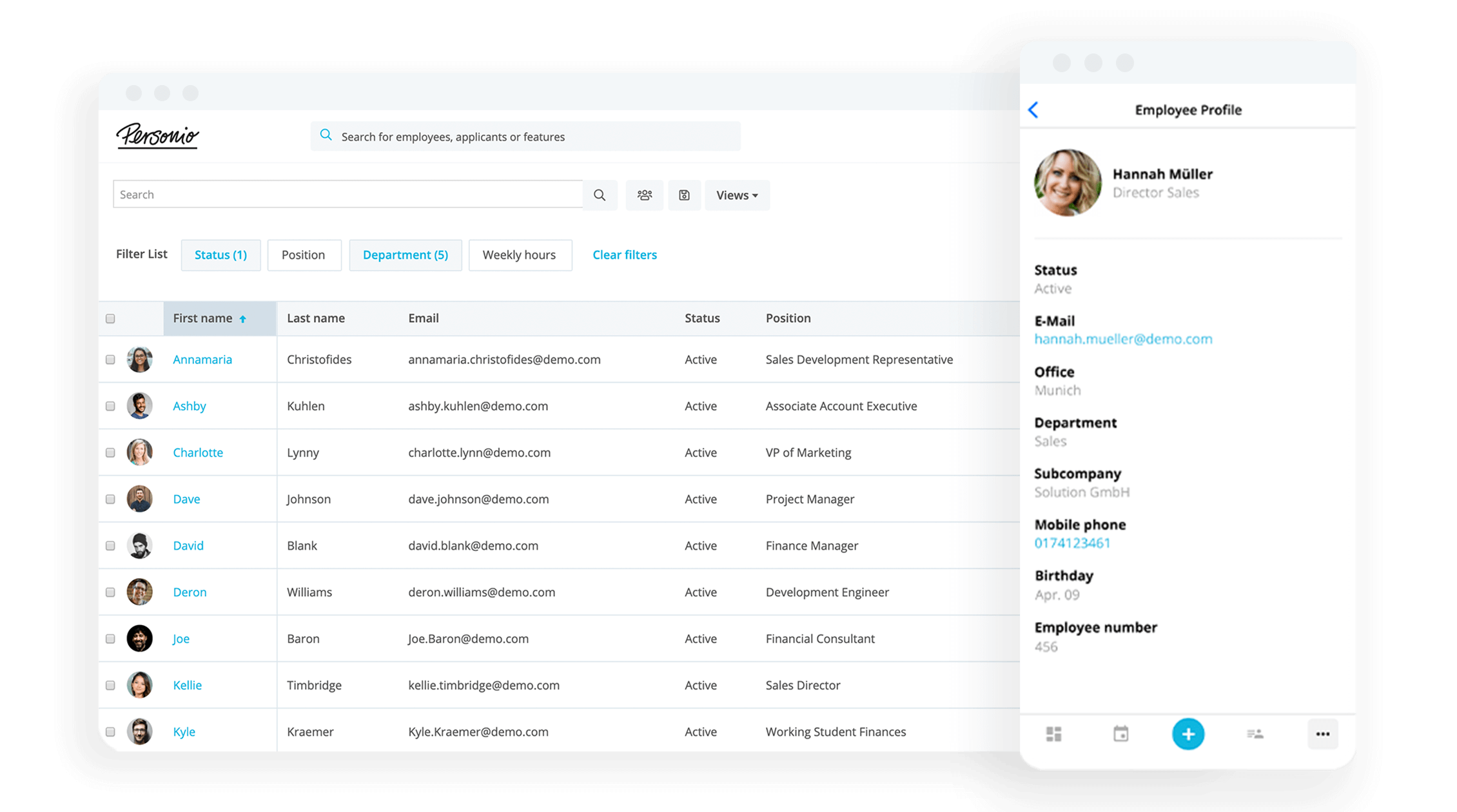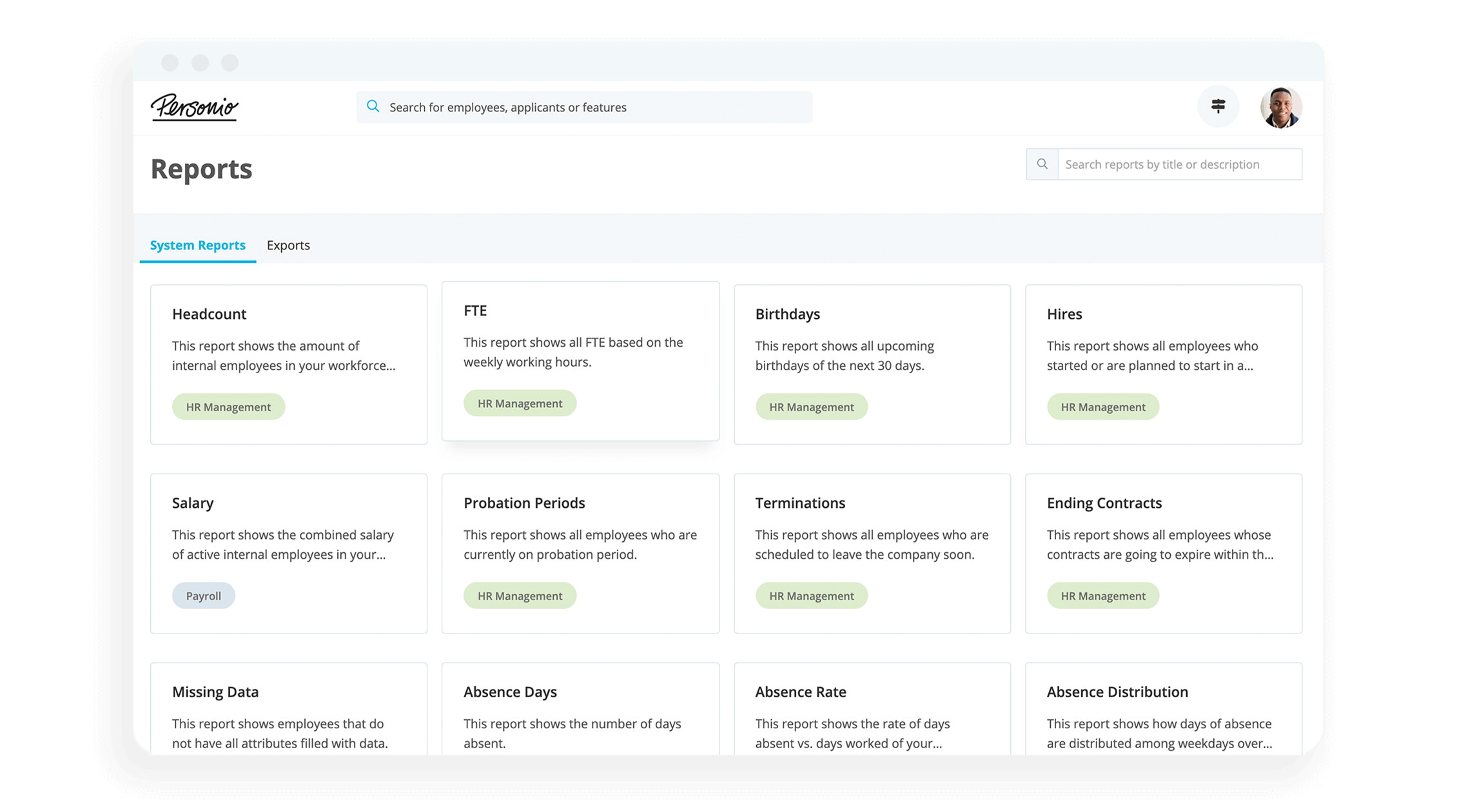
Performance Management Software
Simplify how you deliver your next performance review cycle.
Learn more30. December 2021
Why Inclusive Leadership Matters For Employees

In an inclusive workplace, employees' differences are valued, their unique points of view are encouraged, and their individuality is celebrated.
The problem is, not every organization is as inclusive as they think: One in four employees don’t feel a sense of belonging in the workplace, which means they can’t bring their full, authentic selves to work.
To fix that, there need to be systemic changes – starting with leadership.
The first step can be through people strategy. Download our guide today.What Is Inclusive Leadership?
Inclusive leadership is a management style that is free from bias, discrimination, and favor. An inclusive leader values and respects each individual team member’s unique background, opinion, and point of view, regardless of their protected characteristics, which include:
Culture
Race
Education
Socio-Economic Status
Age
Race
Color
Ethnicity
Language
Nationality
Sexual Orientation
Gender
Religion
Physical Or Mental Disability
7 Qualities Of An Inclusive Leader
Inclusive leadership is an ongoing practice that requires a lot of learning and unlearning. It also requires mastering several important qualities, which may or may not come naturally to the leaders in your organization:
1. Open-Mindedness
Effective leaders can consider different perspectives in a scenario and act without judgment or prejudice. They have a passion for learning, are naturally curious, and want to gain insight into backgrounds and beliefs that differ from their own.
Just as importantly, they know they don’t know everything and show humility over pride. These leaders ask questions to fill in their own knowledge gaps and make space for subject matter experts to share important information.
2. Courage
Inclusive leaders are fearless advocates for their team members—especially those that belong to a minority group or underrepresented community.
They aren’t afraid to stand up against outdated or harmful beliefs in their organization, and they’ll confidently hold others accountable, regardless of their status in the organization.
3. Commitment
These leaders know that change starts with them. They take on that personal responsibility by continually learning, sharing, and demonstrating what it means to be inclusive and welcoming. They’re committed to taking the time, resources, and energy needed to cultivate the best possible environment for their employees.
4. Self-Awareness
Inclusive leaders know where their own biases lie and work to overcome them so they don’t affect their leadership. They also help implement processes and systems in their organization to decrease bias and create a more even playing field for everyone.
5. Excellent Communication
These leaders know that excellent communication is a balance of talking and listening. They take in information without judgment, consider their words carefully, don’t make snap decisions, and speak with empathy.
6. Team Spirit
They’re not just in it for themselves. They believe in the power of inclusivity and how it can benefit their success as a leader, their team members, and their organization as a whole.
7. Cultural Intelligence
They understand a variety of cultural norms and can adapt their behaviour and communication style depending on the scenario. They also understand how their own culture has informed their point of view and behaviour, and which biases it has instilled.
Fully Optimized HRM With Personio

At every stage of the employee life cycle, Personio is there to help. Click the button below to learn more about how Personio can optimize every facet of your HRM processes.
Optimized HR Process With PersonioHow Being An Inclusive Leader Helps Your Organization
Inclusivity does more than just foster good feelings. It can have real, measurable impacts on your organization. When managers are seen as inclusive, employees experience 3.4 times more job satisfaction and 2.7 times higher commitment to the organization.
Here are five unexpected benefits of inclusive leadership:
1. Enhanced Creativity
Every team member brings a plethora of unique experiences, skills, and ideas to work with them every day. But if you haven’t built an inclusive environment where they can openly share and explore those ideas, you’re missing out.
When you create an inclusive environment, employees feel an element of psychological safety that allows them to voice their opinions freely. Those opinions lead to new ideas, which lead to a whole new realm of creativity and innovation. If your employees are worried about feeling rejected or misunderstood if they speak up, you may miss this opportunity.
2. Boosted Performance
When employees feel included and believe their organization is committed to diversity, they report better performance for innovation and response to customer needs. When it comes to gender diversity, companies with 30% female executives are more likely to outperform companies with less executive gender diversity.
3. Positive And Welcoming Culture
When leaders demonstrate and prioritize inclusivity, it encourages their team members to do the same. These leaders make it clear that bias and discrimination have no place in their organization. They also use positive reinforcement to encourage participation.
4. An Increase In Talent
For 76% of jobseekers, a diverse workforce is an important factor in evaluating companies and job offers. It’s clear that today’s workers are looking for more than just a paycheck – they want to join an inclusive workplace that voices their belief in equality.
5. Reduced Staff Turnover
People want to see themselves represented in their organization’s leadership team. It inspires them and proves that they can also reach the higher ranks of the company. It also confirms that their success will not be determined by their race, gender, or any other protected characteristic.
When employees don’t feel represented, supported, included, or valued, they are quick to leave. This is especially true for those that are part of a marginalized or underrepresented community.
Instant Access To Key HR Analytics & Reports

What’s your organization’s current turnover or attrition rate? How about headcount or salary progression? Personio offers easy access to a dashboard filled with HR metrics and reports. Learn more about it by clicking the button below.
Craft HR Reports With PersonioHow Leaders Can Demonstrate Inclusivity
Completing diversity and inclusivity training is one thing, but cultivating a truly inclusive environment is another. Employees want to see action and commitment from their leaders – here’s how those leaders can demonstrate it:
1. Invest In Employee Relationships
Leaders should spend one-on-one time with their team members to learn what matters most to them, inside and outside of work. By building personal relationships, leaders can get their employees’ honest feedback, hear ideas their employees wouldn’t otherwise have the opportunity to voice, and make everyone more comfortable.
2. Share The Vision
Leaders should create and share collective goals with their team so everyone feels like a valued part of the process. Ensure each team member is set up for success by confirming they have the support, guidance, tools, and resources they need to participate.
3. Recognize Your Employees
Inclusive leaders take a personal approach to recognizing and rewarding their employees. They shout out their unique contributions to the team and highlight how their idea, creative solution, or question has made a difference to the business.
4. Stay Connected
Inclusive leaders are constantly aware of what’s happening on their team. They’re naturally ingrained in their day-to-day processes. They stay up to date on how engaged and valued they’re feeling by checking in through formal and informal means.
5. Encourage And Coordinate Socializing
You never know what shared interests and experiences your team members may bond over. To find out, leaders should encourage and facilitate social events for their team. These experiences can improve collaboration, communication, and create a more comfortable environment overall.
Quick Tip: Involve your team in the planning process so they’re more likely to buy into the idea and attend. What types of events or excursions would they like to do? What day or time works best for the majority of people?
6. Promote Participation
When team members don’t feel included, valued, or supported, they’re less likely to participate in meetings or speak up. Leaders should encourage their employees to ask questions and voice their opinions, and always provide a response to confirm that their point of view has been heard and valued.
To encourage participation, give employees a few different ways to provide feedback or ideas so they can choose the method that they’re most comfortable with. This could include town halls, small group meetings, one-on-one messaging, anonymous reports, scheduled calls, or more casual coffee chats.
7. Encourage Bias Confrontation
Inclusive leaders need to be objective, but they often have blinds spots and biases they’re not aware of, such as:
Judging others based on stereotypes
Bias towards those who look like them
Favoritism towards those in inner circles
Confirmation bias
Choosing groupthink over a more rational decision
Openly challenge your own biases with your team and encourage them to do the same by giving them the necessary guidance and resources.
How HR Can Help Develop Inclusive Leaders
Being an inclusive leader is a skill – one that is made sharper with the help of HR. Here’s how you can develop inclusive leadership in your organization, in turn creating a more welcoming, efficient, and creative workplace:
Initiative | Explained |
|---|---|
Identify Areas Of Improvement | First, check in with your employees to determine how leaders can improve their inclusive skills and behaviours. Something to consider is that 71% of employees would be more likely to share opinions and experiences with diversity and inclusion if they could do so anonymously. |
Develop Personalized Training Courses | With the information you gather, you can develop effective Diversity and Inclusion (D&I) training courses that are personalized to your organization’s needs. These training courses are typically scenario-based and rely heavily on storytelling to teach employees and leaders how to identify their biases, build positive interactions with diverse employees, and work together effectively. |
Start A Mentorship Or Coaching Program | Partner new leaders (or leaders in training) with a mentor who demonstrates strong, inclusive behaviour. Through this partnership, the learner can ask the mentor for advice when they face a difficult scenario and get a closer look at what inclusive behaviour looks like on a day-to-day basis. |
Advocate For A Diversity And Inclusion Board | Your organization may benefit from establishing a board of professionals that help shape your inclusivity and diversity efforts. Both leadership members and team members should have access to the board so they can speak directly to them about their concerns and experiences. The board should comprise a diverse group of people from different backgrounds and expertise. |
Any D&I training courses should cover some of the following:
How to identify and overcome internal biases
Guided reflection on their own experiences with discrimination
How to foster an inclusive environment
The benefits of an inclusive workplace
How to prevent discrimination and harassment
Achievable outcomes and goal-setting
Overall, this training aims to increase the employee’s awareness of diversity and give them the knowledge and communication skills they need to create an inclusive environment.
